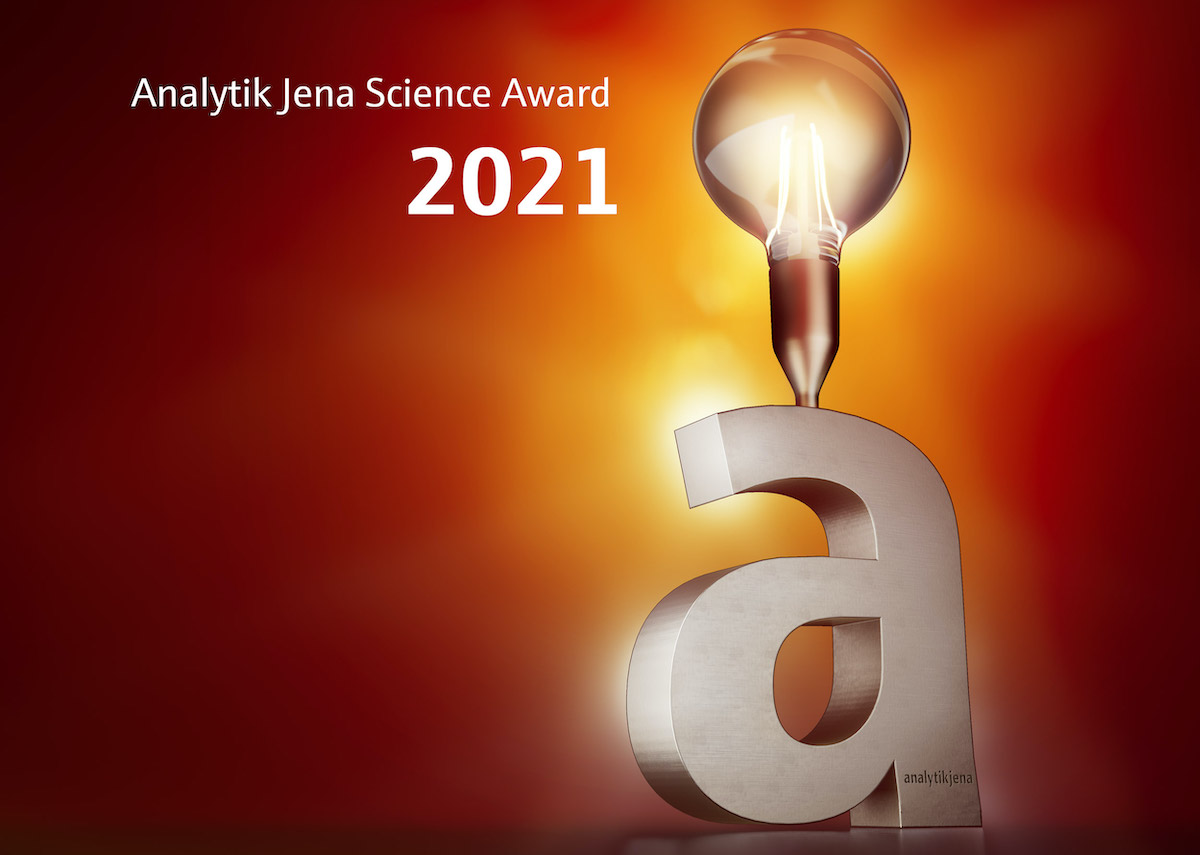Members Login

Channels
Special Offers & Promotions
Award-winning research: Genetic analysis for species protection and biopolymer conductivity

For the third year, Analytik Jena has presented its Science Award for outstanding work that employs Analytik Jena solutions
Analytik Jena has announced that its annual Science Awards have been awarded for work that employed Analytik Jena solutions in the fields of chemical analysis and molecular biology.
Richard Pabst was recognized with the award for “Best Scientific Paper in the Field of Molecular Biology”. In his paper "Modern Species Conservation Using eDNA Analysis”, he explains the potential of PCR analysis in the detection of endangered species in their biotopes. PCR technology is now well known to the general public thanks to its use in the detection of SARS-CoV-2. The paper describes the use of the detection of genetic material for species conservation. The technology does not interfere with sensitive ecosystems and therefore upholds the EU Habitats Directive 92/43/EEC. Richard Pabst has also founded the IdentMe startup, which is dedicated to this task, together with Anne Findeisen and Patricia Holm. The award-winning paper impressively illustrates how versatile qPCR can be when used in connection with the qTOWER3 as a detection method.
From the judging committee’s decision - "Best Scientific Paper in the Field of Molecular Biology"
“The detection of rare and endangered species is often associated with high effort and time-consuming and invasive measures, such as trapping and capturing individual animals. A completely new approach to detection is offered by the detection of DNA fragments in environmental samples. DNA obtained from environmental samples (eDNA) is analyzed for specific gene fragments using qPCR. The detection of these specific gene fragments then allows conclusions to be drawn about the presence of the corresponding species. In the present paper, the IdentMe team has impressively demonstrated the potential of screening environmental samples for eDNA (enviromental DNA). Using qPCR, it becomes possible to quickly and non-invasively detect species in biotopes. … Especially in the investigation of aquatic ecosystems, the examination of eDNA samples offers enormous advantages. Since DNA traces of organisms can be detected through excretions or skin and mucus cells in the water.”
The award for “Best Scientific Paper in the Field of Chemical Analysis” went to Catharina Erbacher of the University of Münster. Her paper "A fast and automated separation and quanti?cation method for bromine speciation analyzing bromide and 5-bromo-2’-deoxyuridine in enzymatically digested DNA samples via ion chromatography-inductively coupled plasma-mass spectrometry" addresses research on the conductivity of DNA molecules, with the PlasmaQuant MS ICP-MS system being employed in the process. As the judging committee expressed it, “DNA, as a molecule of almost any length, has also aroused the interest of material science with its property as an electrical conductor”. Moreover, its “high stability and the possibility of self-organization … has many other useful properties for nanotechnology”, such as information storage. Research into the conductivity properties of the biopolymer is therefore of particular importance.
From the judging committee’s decision - „Best Scientific Paper in the Field of Chemical Analysis”:
“Here, the highly sensitive PlasmaQuant MS and its innovative iCRC collision cell in combination with ion chromatography have been used to analyze the charge transfer along DNA molecules in a highly efficient way. … The transfer of electrons along the DNA molecule can be studied by different electron donor/acceptor systems. The donor and acceptor are built into the DNA strands as artificial nucleobases. The light-sensitive electron donor is excited by UV radiation which then injects an electron into the molecule, that is then passed along the DNA double helix. A particularly good electron acceptor is the brominated nucleoside 5-bromo-2'-deoxyuridine (5-BrdU), which upon accepting the electron releases a bromide ion within a few nanoseconds, which in turn can be detected by ICP-MS. Interferences occurring during detection could be minimized by using the iCRC collision technology while maintaining the high sensitivity. … The overall topic, the innovative use of methods and the results make this work special and an award-worthy achievement.”
Analytik Jena presented its Science Award for the third time in 2021. The competition is geared towards raising the visibility of research results that are obtained through the use of Analytik Jena instruments and technologies. A particular focus is placed on potential for applications that can open up new paths forward both for the researchers and for Analytik Jena as a solutions provider. The winners receive 1000 euros for their personal use. Participation is open to individuals and organizations from the business world, universities and research institutes, and from the public and non-profit sectors.
Recent news from Analytik Jena
Media Partners


